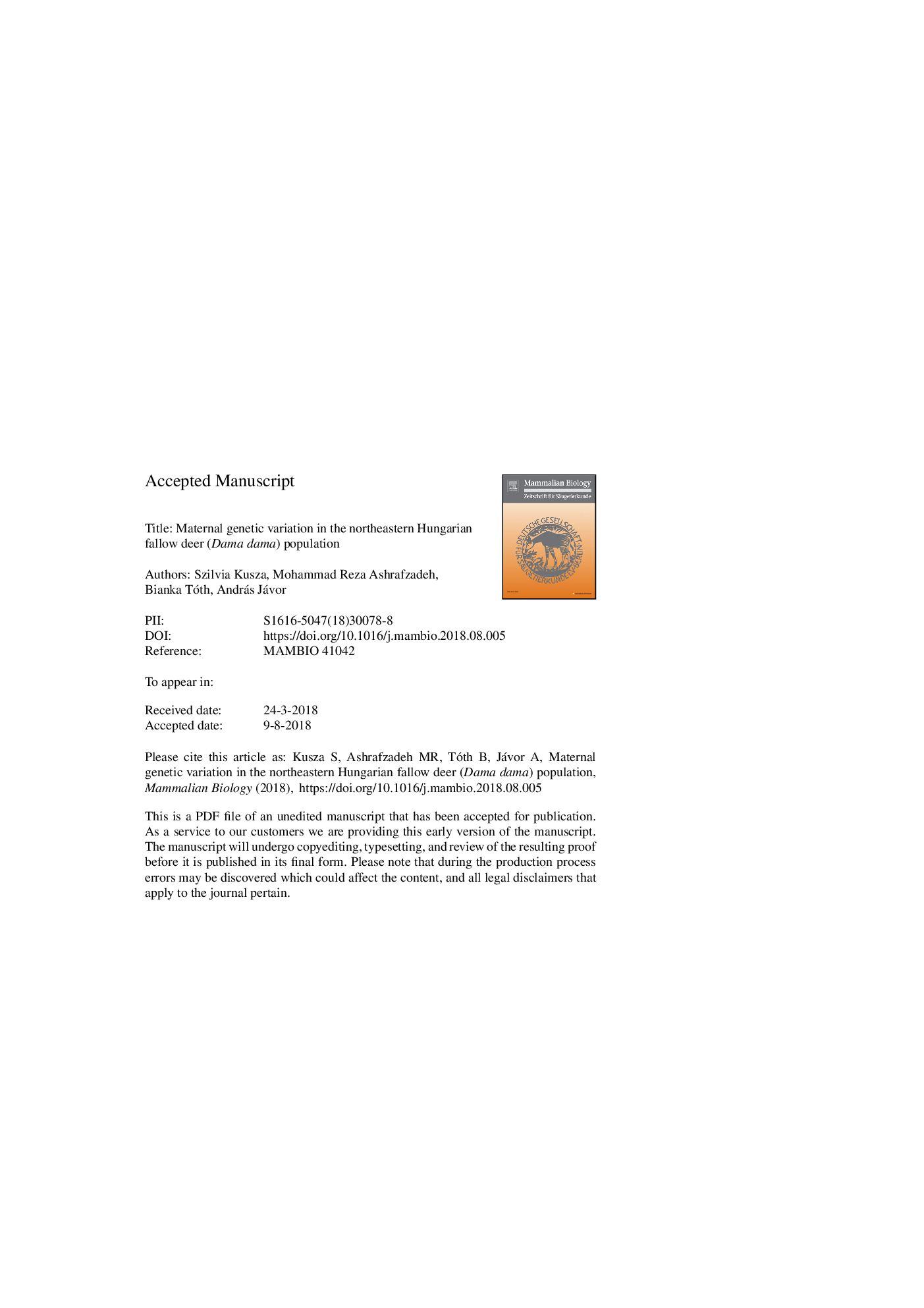| کد مقاله | کد نشریه | سال انتشار | مقاله انگلیسی | نسخه تمام متن |
|---|---|---|---|---|
| 8475482 | 1550454 | 2018 | 30 صفحه PDF | دانلود رایگان |
عنوان انگلیسی مقاله ISI
Maternal genetic variation in the northeastern Hungarian fallow deer (Dama dama) population
دانلود مقاله + سفارش ترجمه
دانلود مقاله ISI انگلیسی
رایگان برای ایرانیان
کلمات کلیدی
موضوعات مرتبط
علوم زیستی و بیوفناوری
علوم کشاورزی و بیولوژیک
علوم دامی و جانورشناسی
پیش نمایش صفحه اول مقاله

چکیده انگلیسی
Hungary has one of the strongest fallow deer (Dama dama dama) populations in the world. This is confirmed by the fact that the latest two world-record trophies were bagged at Gúth in northeastern Hungary. Despite this, no information about the genetic diversity or structure of this population has been published. In this work, we present a first assessment of the maternal genetic variability of the fallow deer populations in northeastern part of Hungary. We sequenced 41 animals for a 450 fragment of the control region of mitochondrial DNA. Three haplotypes were detected, and two of them were novel. An alignment was created using our sequences together with an additional 39 mtDNA control-region haplotypes (comprising 218 sequences) downloaded from GenBank. The results based on phylogenetic trees (Bayesian inference and maximum likelihood) and median-joining network showed distinct groups: (1) including fallow deer from Italy and Germany; (2) contained samples from Iberia (Spain and Portugal); (3) included Rhodian and a few Italian fallow deers; (4) comprised sequences from Canada, Africa, the Middle East, and across Europe (including Hungary) and (5) including individuals from Anatolia (Turkey), which showed a lower level of mitochondrial diversity compared to the other groups. BAPS program suggested 8 clusters within fallow deer sequences. All our sequences from northeastern Hungary fell into one cluster. AMOVA analysis showed that 87.47% of the genetic variation was included among the BAPS clusters and 12.53% of the variations was observed within the eight clusters. The neutrality tests indicate that populations belong to cluster1 (Italian and German fallow deer) may have experienced recent population expansion event. It is also clearly apparent that the current patterns of genetic diversity are mainly influenced by anthropogenic factors.
ناشر
Database: Elsevier - ScienceDirect (ساینس دایرکت)
Journal: Mammalian Biology - Volume 93, November 2018, Pages 21-28
Journal: Mammalian Biology - Volume 93, November 2018, Pages 21-28
نویسندگان
Szilvia Kusza, Mohammad Reza Ashrafzadeh, Bianka Tóth, András Jávor,